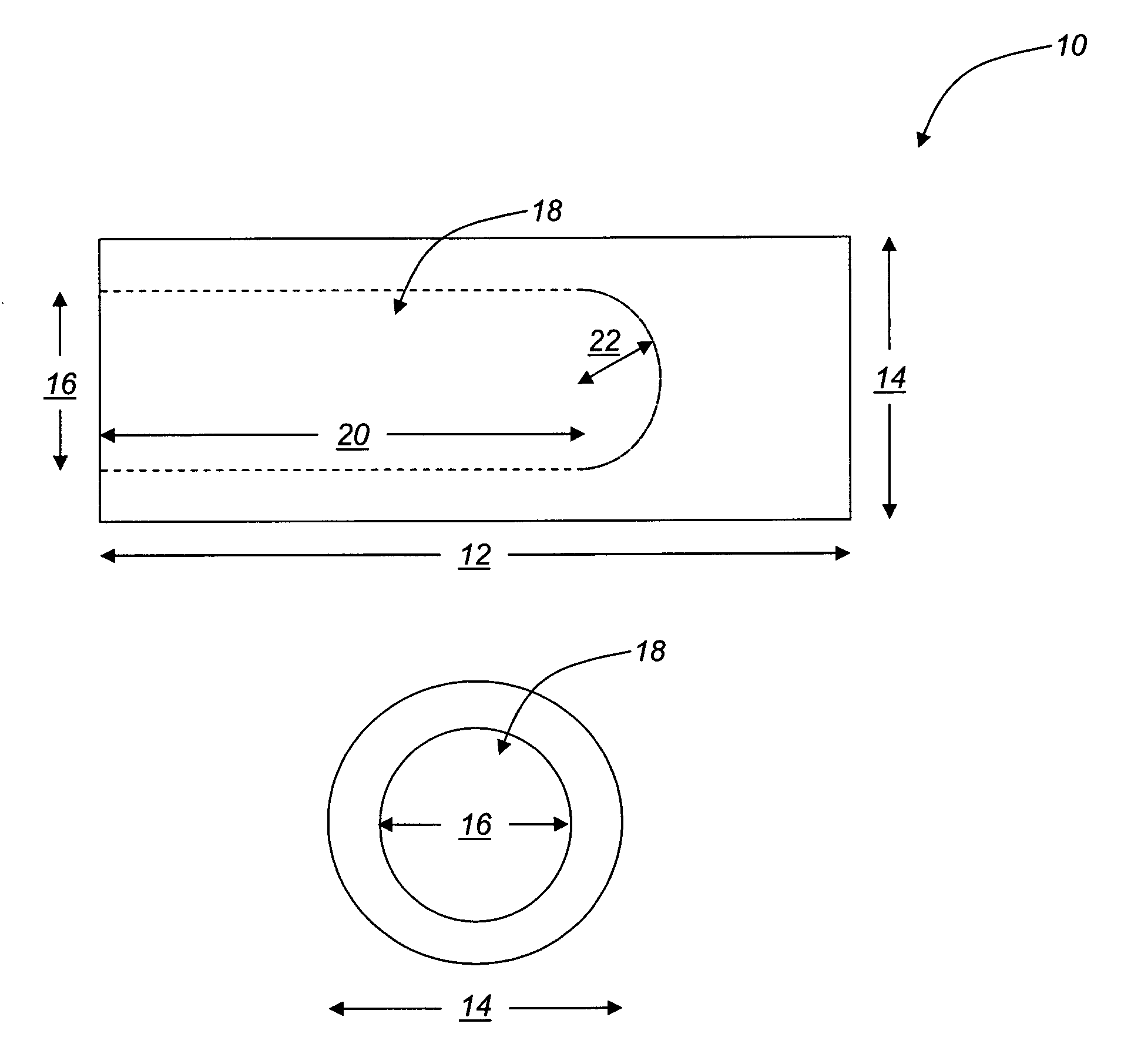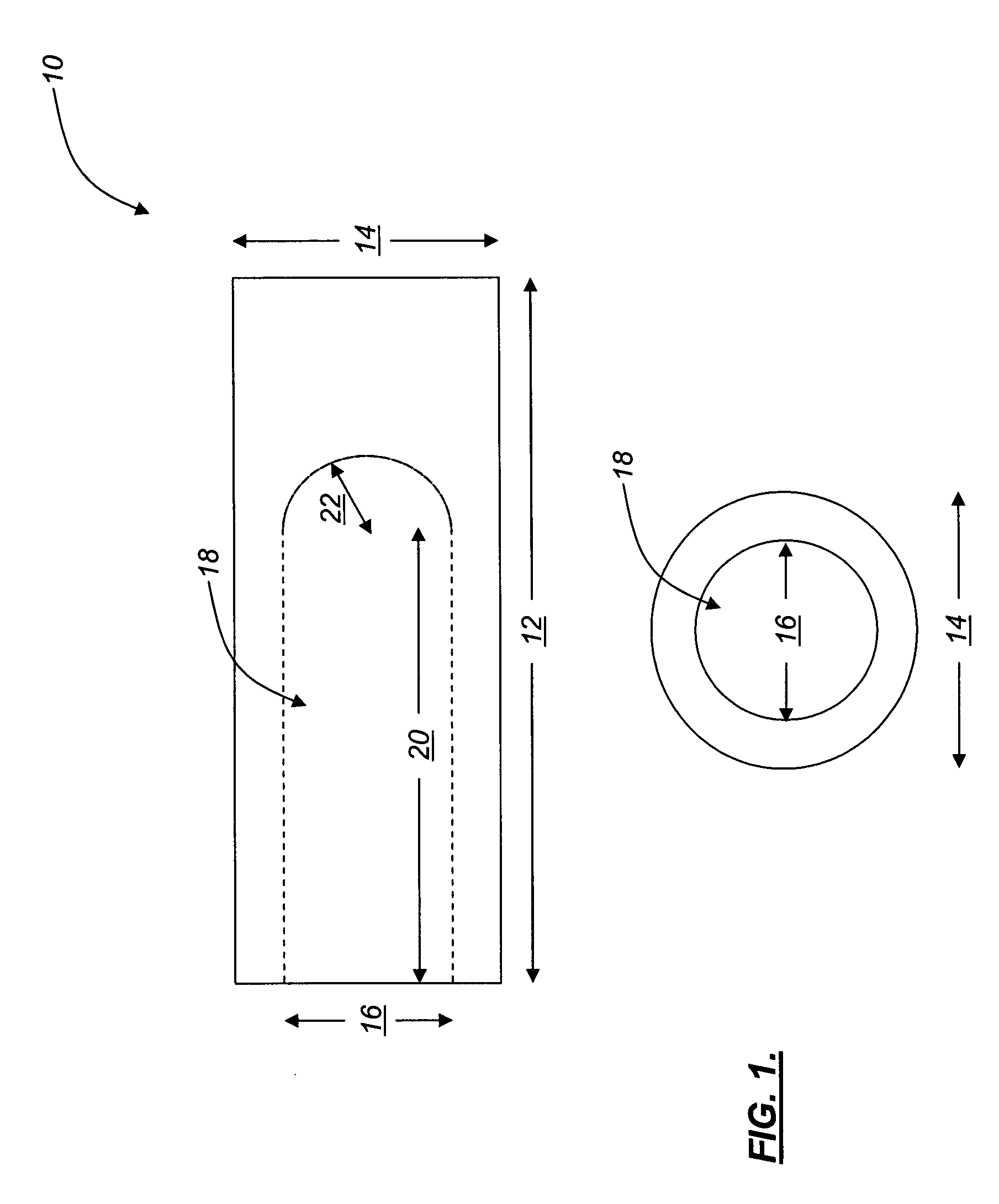High-temperature composite articles and associated methods of manufacture
a composite article and high-temperature technology, applied in the direction of coatings, etc., can solve the problems of not showing a useful combination of mechanical properties at the ever-increasing operating temperature required to improve affecting the overall turbine performance and efficiency, and causing nominal incremental cross-sectional reductions
- Summary
- Abstract
- Description
- Claims
- Application Information
AI Technical Summary
Benefits of technology
Problems solved by technology
Method used
Image
Examples
example
[0024] A mixture of about 75 volume percent Nb—Ti—Hf and about 25 volume percent Si—Cr—Al was consolidated in a stainless steel can 10 (FIG. 1) and hot extruded at about 950 degrees C. to produce a rectangular cross-section billet with a nominal reduction of about 6:1 (optionally, the can may also be fabricated from molybdenum, tungsten, and / or the like). The following powders were used: Nb—Ti—Hf powder—64 atomic percent Nb (about 70.95 weight percent), 30.67 atomic percent Ti (about 17.53 weight percent), 2.66 atomic percent Hf (about 5.67 weight percent), and 2.67 atomic percent W (about 5.85 weight percent); Si—Cr—Al powder—72 atomic percent Si (about 61.69 weight percent), 20 atomic percent Cr (about 31.72 weight percent), and 8 atomic percent Al (about 6.59 weight percent). The resulting powder mixture contained about 11.53 weight percent (about 25 volume percent) Si—Cr—Al and about 88.47 weight percent (about 75 volume percent) Nb—Ti—Hf (the mixture having a nominal average ch...
PUM
| Property | Measurement | Unit |
|---|---|---|
| Time | aaaaa | aaaaa |
| Time | aaaaa | aaaaa |
| Percent by atom | aaaaa | aaaaa |
Abstract
Description
Claims
Application Information
 Login to View More
Login to View More - R&D
- Intellectual Property
- Life Sciences
- Materials
- Tech Scout
- Unparalleled Data Quality
- Higher Quality Content
- 60% Fewer Hallucinations
Browse by: Latest US Patents, China's latest patents, Technical Efficacy Thesaurus, Application Domain, Technology Topic, Popular Technical Reports.
© 2025 PatSnap. All rights reserved.Legal|Privacy policy|Modern Slavery Act Transparency Statement|Sitemap|About US| Contact US: help@patsnap.com


